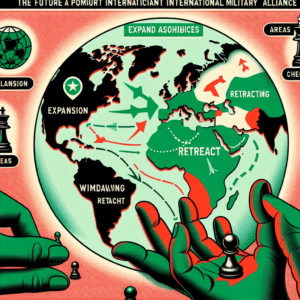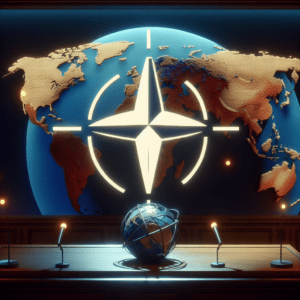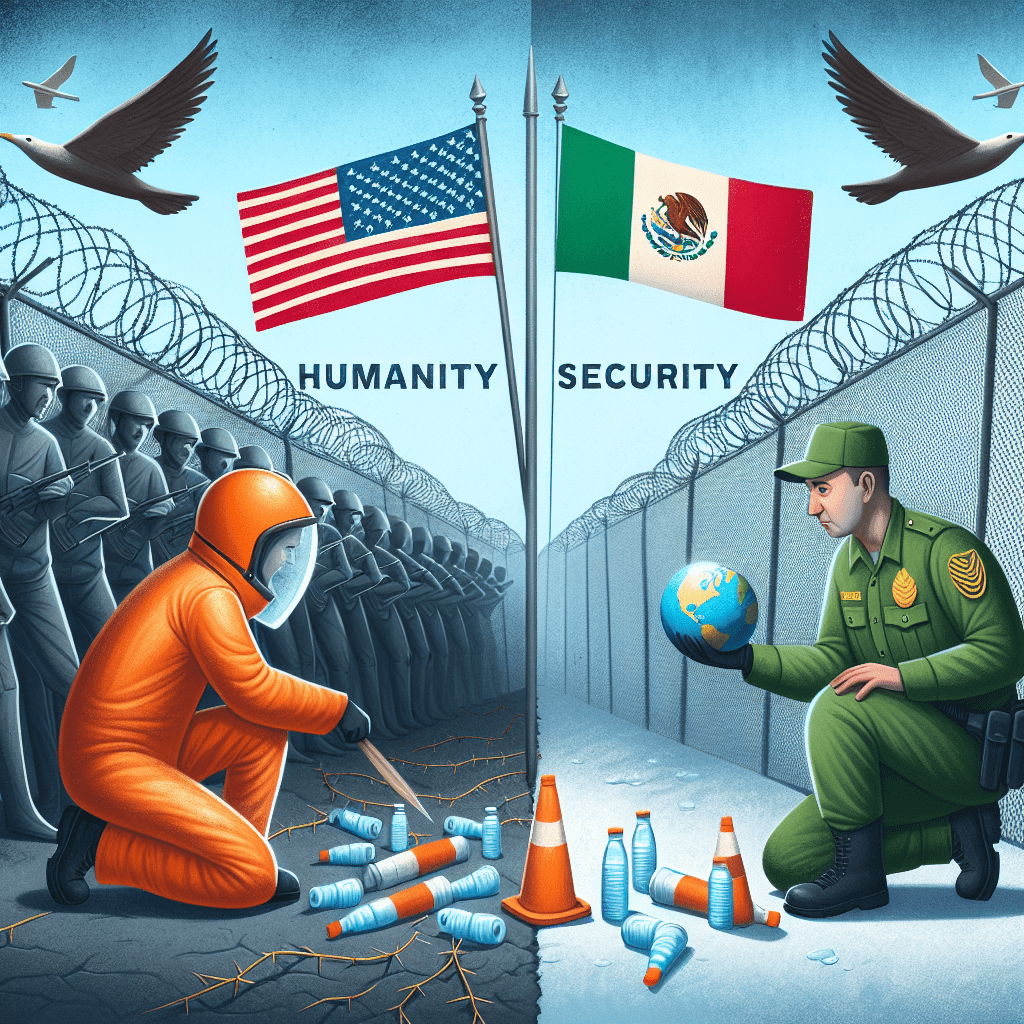Imagine you are standing in front of a global organization that consists of several countries and has formed a strong bulwark of security and stability since its foundation over 70 years ago. Now you are faced with a crucial question: should this organization expand and further develop its presence and capabilities or should it retreat to focus on its core strengths and values? This is the question facing the North Atlantic Treaty Organization, better known as NATO, today. In this article, we will analyze NATO’s current challenges, discuss the reasons for and criticisms of its expansion, and consider possible scenarios for withdrawal. In addition, we will explore how external geopolitical factors could influence NATO’s future. Join us in this search for answers to one of the most pressing questions in world politics today: NATO’s future – expansion or retreat?
1 NATO’s current situation and challenges
NATO today faces a number of challenges, both external and internal. In terms of foreign policy, NATO is confronted with growing Russian militarism, particularly on the Alliance’s eastern borders. In addition, the rising power of China, with its growing military and economic influence, is an emerging challenge. The alliance also has to deal with the ongoing threat of international terrorism, cyber attacks and hybrid threats.
Internally, there are also a number of challenges. These include political differences between member countries, issues of defense spending and military readiness. Respect for the democratic values and principles that form the foundation of the alliance is also being called into question in some member states.
Regardless of these challenges, NATO’s goal remains the same: to ensure the security of its member states through political and military means. While the nature of the threats may change over time, the fundamental pact that binds all members – an attack on one is an attack on all – remains the key component of NATO’s strategy.
2 Analysis of NATO’s enlargement policy

NATO’s expansion has been a continuous process over the past decades. Since the Cold War, it has increased its membership from 12 to 30 and extended regional ties to the Western Balkans, the Baltic states and Eastern Europe. However, this expansion policy is not without controversy.
NATO’s original purpose was to secure peace in Europe by providing an effective deterrent against the Soviet Union. After the collapse of the Soviet Union and the end of the Cold War, NATO redefined itself and continued its expansion as a means of promoting stability and security in Europe. Today, it no longer sees itself solely as a military alliance, but also as a political actor.
NATO’s enlargement policy is based on the principle of an open door, which means that any European country that respects the principles of democracy, the rule of law and human rights and is willing to contribute to the security of the Atlantic area can apply for membership. In recent decades, NATO has focused on top candidates such as Georgia and Ukraine.
However, this enlargement policy is not without obstacles and challenges. Firstly, there is the issue of enlargement fatigue among existing members. Some Western European countries are concerned about NATO’s expansion into areas traditionally under Russia’s influence and fear that this could provoke unnecessary tensions.
Secondly, the military capabilities of the potential new members pose a challenge. It is no easy task to upgrade the armed forces to NATO standards and make them interoperable with the other member states.
Thirdly, NATO faces the challenge of monitoring the candidate countries’ progress and commitments to democracy, the rule of law and human rights. For this reason, NATO has introduced partnership programs such as the Partnership for Peace or the NATO-Ukraine Action Plan to promote greater political cooperation and reforms in these areas.
Despite these challenges, the continued enlargement of NATO is part of the Alliance’s long-term strategy and seems likely, provided that the candidate countries meet the required standards and regulations.
Possible scenario for future NATO expansion
 A possible scenario for future NATO enlargement could be a continued expansion into areas that are strategically important to ensure the security and stability of existing member states. Countries located on the periphery of Europe or in an insecure geopolitical position, for example, could be possible targets for NATO involvement. Specifically, countries such as Georgia or Ukraine, both of which are already seeking close cooperation with NATO and are geopolitically turbulent, could be such targets.
A possible scenario for future NATO enlargement could be a continued expansion into areas that are strategically important to ensure the security and stability of existing member states. Countries located on the periphery of Europe or in an insecure geopolitical position, for example, could be possible targets for NATO involvement. Specifically, countries such as Georgia or Ukraine, both of which are already seeking close cooperation with NATO and are geopolitically turbulent, could be such targets.
If you look at the deciding factors, you will find that the country’s aspirations, military capabilities and political will to reform are usually the deciding factors for an invitation to NATO membership. Countries willing to join NATO must undergo a series of reforms – in the areas of democracy, human rights and military command – to meet the Alliance’s standards and requirements.
However, it is important to emphasize that NATO expansion is not a straightforward or guaranteed process. It depends on many factors, including the political map in Europe and the US, geopolitical considerations and, not least, the willingness of current NATO member states to accept new countries and expand their commitment to the Alliance.
4 Criticism and controversy over NATO expansion
 There are certainly controversies and critical voices in the discussion about a possible NATO expansion. Many observers and analysts are of the opinion that a further expansion of NATO would unnecessarily increase geopolitical tensions, particularly with Russia. Russia has already expressed its concern about NATO’s expansion to the east on several occasions and sees this as a direct threat to its own security.
There are certainly controversies and critical voices in the discussion about a possible NATO expansion. Many observers and analysts are of the opinion that a further expansion of NATO would unnecessarily increase geopolitical tensions, particularly with Russia. Russia has already expressed its concern about NATO’s expansion to the east on several occasions and sees this as a direct threat to its own security.
Another point of criticism is the question of whether NATO’s expansion will actually lead to greater security in Europe or rather contribute to an erosion of the sense of security in the Eastern European countries that are not members of the alliance. NATO is faced with the dilemma of meeting the security wishes of its members on the one hand, while avoiding an escalation of tensions with Russia on the other.
In addition, many analysts and experts are asking themselves to what extent NATO will be able to maintain and improve its collective defense capability if it expands further. The question of the financial burden is particularly relevant here. Many member states are already struggling to meet their financial obligations to the Alliance. Further enlargement could exacerbate this challenge.
The debates and controversies show that a possible NATO enlargement is not a simple process. It requires a careful assessment of the risks and consequences and must be seen against the backdrop of a rapidly changing global security landscape.
5 Analysis of the scenario for possible NATO withdrawal
The idea of a possible NATO withdrawal probably sounds like a defeat to many on the outside, but it is important to examine this scenario in detail. A gradual withdrawal of NATO does not necessarily mean the end of this transatlantic alliance. Rather, it could mean a change in its role and political significance – an adaptation to changing geopolitical realities.
Why might NATO withdraw? Many member states, particularly in Europe, are dissatisfied with the financial cost and political tensions associated with NATO missions. The USA in particular has repeatedly expressed its displeasure at the unequal distribution of burdens within the alliance.
You have to remember that withdrawal does not happen from one day to the next. It could primarily mean a reduction of presence in certain countries or regions, followed by a refocusing on defense services within the member states’ own borders. NATO could thus evolve from an active, international security organization into a more passive, regional defensive force.
In this context, NATO would no longer be the global bulwark against threats, but would primarily guarantee the territorial integrity of its member states. This scenario would likely raise concerns in both NATO’s member states and partner countries. However, it could also provide an opportunity for a fresh start and stronger regional cooperation.
Regardless of whether such a development is desirable, it is definitely conceivable in the current geopolitical landscape. The question is how NATO and its member states could shape such a transformation and what impact it would have on the international security order.
6 Implications of withdrawal for member states and partners
When we imagine a possible NATO withdrawal, the member states and partners affected are of deep concern. You will see that the implications can be both short and long term and diverse, both for the member states and for the Alliance’s partner countries.
These member states, especially those located near aggressive neighbors or unstable regions, would lose their collective defense structure. This could make them more vulnerable to the threat of attack or intimidation. For them, NATO withdrawal means a loss of the security network they have had until now.
In addition, smaller NATO members that do not have extensive military capabilities could be forced to drastically increase their defense budgets in order to build up independent protection. This could put a strain on their economies and lead to social tensions.
Partner countries that are not NATO members but still maintain close relations and cooperation with the Alliance would also feel the effects. They could be excluded from strategic discussions and security initiatives, which could diminish their regional role and influence.
Finally, a NATO withdrawal would change the global balance and geopolitical dynamics. Without NATO, power gaps could emerge that could be exploited by other actors, leading to instability and new conflicts.
As you can see, a NATO withdrawal would have far-reaching effects and consequences.
7 Pressure for change from external geopolitical factors
External geopolitical factors exert considerable pressure on NATO to adapt and rethink its strategies and methods. It is important to understand the global geopolitical context in which NATO operates and to recognize the factors that could lead the West to withdraw or expand from NATO.
Let’s start with Russia, the traditional challenge to the security of the Western bloc. Since Russia’s annexation of Crimea in 2014 and its ongoing interventions in Ukraine, NATO and Russia have been at loggerheads. NATO therefore feels compelled to expand its presence in Eastern Europe in order to provide security to its member countries.
As China becomes an increasingly dominant player on the world stage, its role and relationship with NATO is another factor to consider. China has had minimal contact with NATO, but its growing military strength and influence may require NATO to reorient itself.
Recent developments in the Middle East, especially the growing influence of Iran and the increasingly complicated scenario in Syria, also require a NATO response.
Another item in this long list of challenges is cyber warfare. Threats in the cyber world are constantly growing and we see countries, including non-NATO countries, using increasingly sophisticated cyberwarfare techniques.
Climate-related security challenges are also significant. They range from migration due to natural disasters and resource scarcity to the security of Arctic routes.
Therefore, whatever direction NATO takes in the future, it must be prepared to meet these geopolitical changes and be flexible enough to adapt its strategies and tactics accordingly.
8 Finding consensus and NATO’s future direction
It is clear that the future of NATO is a crucial question not only for its member states but also for the entire international security structure. The need for consensus on the future direction of this powerful alliance is therefore of paramount importance.
You must know that decisions within NATO are made on the basis of consensus among all members. This means that every single nation, regardless of its size or power, has a veto over any proposed action. In the context of discussions on expansion or withdrawal, this would mean that any move in either direction would require the consent of all member states.
Finding a common position in an organization with members from different geopolitical, cultural and economic contexts is, of course, no easy task. It requires extensive diplomacy, negotiation and possibly compromise.
There are various considerations regarding NATO’s future direction. Some argue that NATO should continue to develop its traditional role as a military defense alliance, taking greater account of new threats such as cyber security and terrorism. Others see a more important role for NATO in promoting democracy and the rule of law, both within its member states and in its foreign policy.
Whatever the final decision, it will certainly have far-reaching implications for global security and geopolitics. It is to be hoped that NATO member states can reach a consensus that meets the needs of both their own citizens and the international community.





